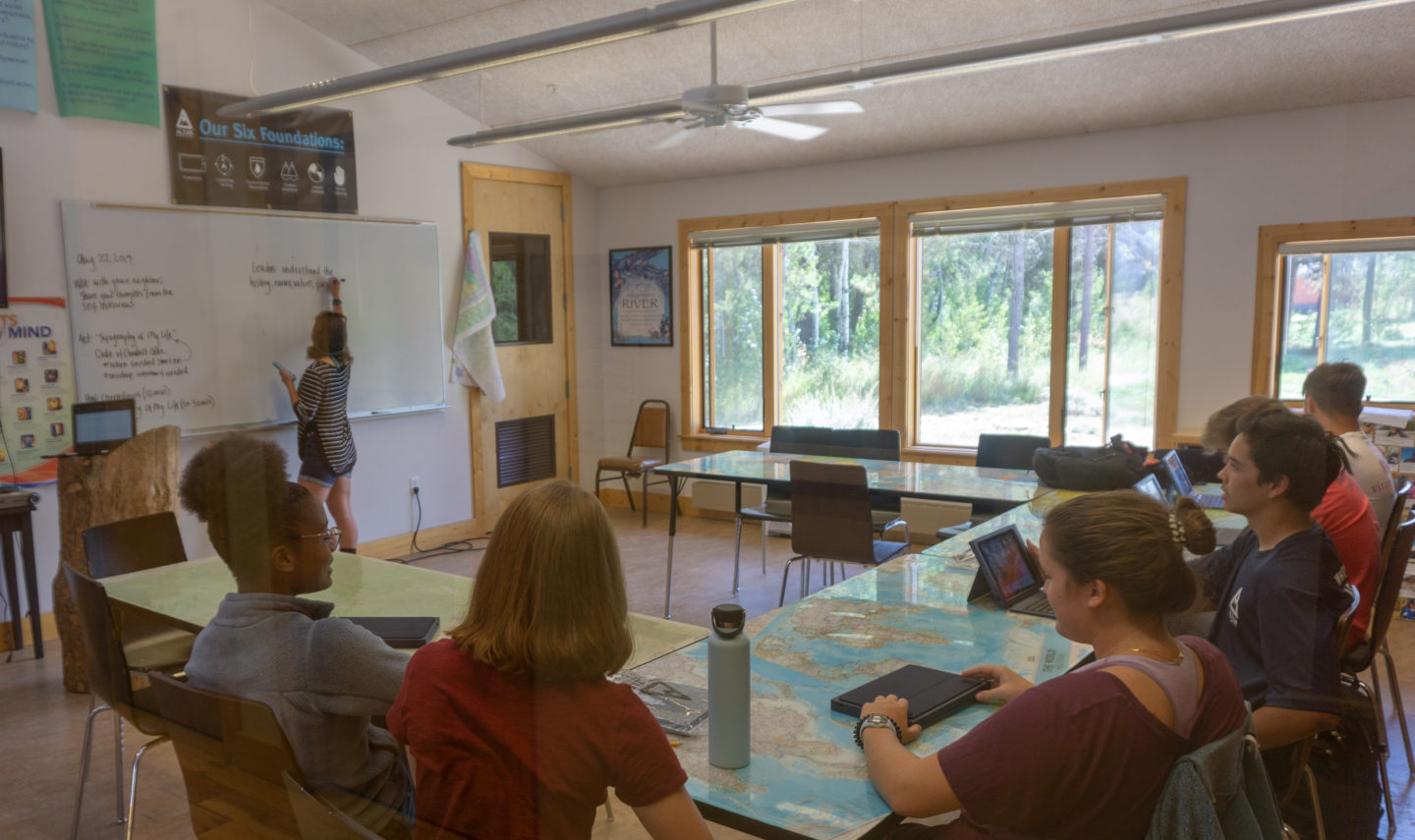Leadership Class: Building Bridges
Students are entering the second stage of developing their Culminating Leadership Projects. Drawing from their Odessey Plans, project planning tools that help students develop a scope of work and gauge the resources, passion, confidence and coherence of an idea, Fall 2019 students have selected their best idea and are building out the resources and relationships needed for implementation.
Six students ferry into the sunlit classroom and Hattie calls the class to attention. Breaking into groups of three, students take one minute each to briefly explain their projects to each other. Gunner wants to help a local non-profit revamp their media presence. Roan is looking to start a “Coral Club” at his school raise awareness about coral restoration. Kate is organizing a cleanup day on the James River, in Richmond. Cedar wants to host an ethnic mountain film fest. Willa is going to connect high school and elementary school students through a mentorship program. Jillian plans to partner with a grilled cheese truck to host a fundraiser for No Kid Hungry.
The next task, Hattie explains, is “finding the people, the places, the organizations that already exist to help your project happen.”

While some students already have identified the people (parents, mentors, friends) who can help them kickstart their idea, all of these budding projects have gaps and most likely unforeseen obstacles. Today’s lesson focuses on bridging connections and, with the help of their Alzar School peers, identifying the individuals, groups and communities that can serve as resources for their Culminating Leadership Projects. As the lesson worksheet outlines, “when starting any new idea or project, it is important to look at what others are already doing from which you might learn and grow.”
Students dive onto the internet, Googling, searching and brainstorming the various partners they think could serve as models or advocates for their ideas. For homework, the two student groups are tasked with researching resources for each other’s projects, knowing that each student will bring a different perspective to what is needed or what might serve as a good resource. This multi-angled planning approach is designed to help set students up for success and provide the contacts to which they will need to cement in order to implement their ideas and make a positive impact on their community back home.

